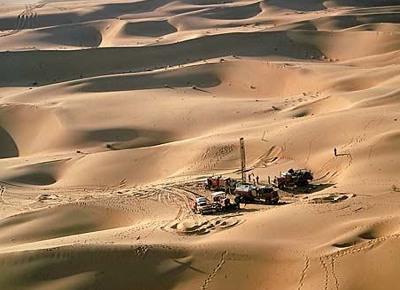|
Home >> Oil Exploration

Crude oil is a natural resource that is formed from the ancient remains of microorganisms called plankton which decayed and remain buried underground. Over millions of years, the mud and sand which covered these remains turned into hard rocks. The high temperature and other geological factors transformed the decayed biomass into a hydrocarbon rich, dark thick liquid, which is highly inflammable and can produce energy. This is termed crude oil. Therefore, crude oil is found in reservoirs trapped in the layers of rocks.
Before any oil can be extracted from the earth, it must be located. Finding oil is assigned to geologists. Some of these geologists are employed directly by oil companies, and some are under contract from private firms. Geologists try to locate the areas where the right conditions are present to form oil.
In the past, geologists interpreted surface features, surface rocks, soil types, and small core samples collected by shallow drilling.
The most common practice used to find oil reservoirs deals with seismology. With the creation of shock waves that pass through hidden rock layers, and the interpretation of the waves that are reflected back to the surface, scientists can locate areas that have a higher probability of containing oil.
Shock waves can be created by:
Compressed-air gun: pulses of air are shot into the water (for exploration over water)
Thumper truck: pounds heavy plates onto the ground (for exploration over land)
Explosives: explosives are put into holes drilled into the ground or thrown overboard (for exploration over water), and detonated.
Shock waves travel beneath the ground and are reflected back by the different rock layers. These reflections travel at different speeds depending upon the type or density of rock layers. The reflections of the shock waves are detected by sensitive microphones or vibration detectors. The data is collected and interpreted by seismologists for signs of oil and gas traps.
Geologists also examine surface rocks and terrain with the help of satellite images. In addition, they can use sensitive gravity meters to measure small changes in the Earth's gravitational field that could indicate the if there is a flow of oil. Sensitive magnetometers to measure tiny changes in the Earth's magnetic field caused by flowing oil are also utilized. Detecting the smell of hydrocarbons using sensitive electronic noses called sniffers is also used.
There is only a 10-percent success rate for finding new oil fields, therefore oil exploration is very costly.
|

